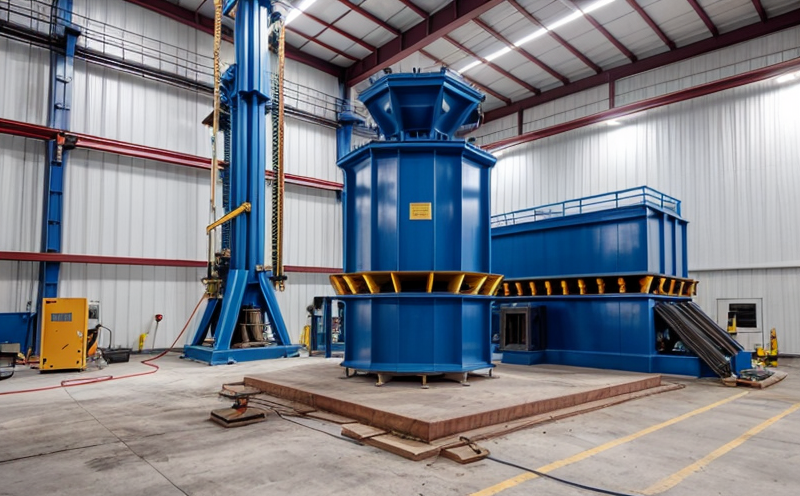ASTM E2001 Vibration Qualification of Aerospace Structures
The ASTM E2001 standard provides a comprehensive method for qualifying aerospace structures to withstand vibration environments. This qualification ensures that the structural integrity and performance of aircraft, spacecraft, and related components are maintained under specified vibration conditions. Compliance with this test is crucial for manufacturers and suppliers in ensuring product reliability and safety.
The ASTM E2001 process involves subjecting a specimen to controlled vibration through a series of sine sweeps across multiple frequency bands. This testing ensures that the structure can handle the dynamic loads it will encounter during flight and operation. The test is particularly important for aerospace structures, as they are subjected to complex environmental conditions that can affect their performance.
The ASTM E2001 process begins with a detailed understanding of the operational environment requirements specified by the customer or regulatory body. This includes identifying critical frequencies, acceleration levels, and duration periods under which the structure will be exposed to vibration. Once these parameters are established, the test is designed accordingly. Specimen preparation involves ensuring that all fasteners, joints, and interfaces are in place, allowing for accurate measurement of structural response.
The testing apparatus used includes shakers capable of producing controlled sine waveforms across a wide frequency range. Sensors such as accelerometers and strain gauges are attached to the specimen to monitor its response during the test. The data collected is then analyzed using modal analysis software to determine the natural frequencies, damping ratios, and mode shapes of the structure.
Upon completion of the ASTM E2001 test, a detailed report is generated that includes all recorded vibration spectra, modal parameters, and any deviations from expected performance. This report serves as evidence of compliance with the specified requirements and provides valuable insights into the structural behavior under simulated operational conditions.
The ASTM E2001 process not only ensures product reliability but also contributes to overall quality assurance in aerospace manufacturing. By adhering to this standard, manufacturers can demonstrate their commitment to safety and performance excellence, thereby enhancing their reputation among customers and regulatory bodies.
- Shakers
- Sensors (Accelerometers)
- Strain Gauges
- Modal Analysis Software
The ASTM E2001 vibration qualification process is a critical step in the aerospace industry, ensuring that structures are capable of withstanding the rigorous environments they will encounter. This test plays a vital role in maintaining the integrity and performance of aerospace components, ultimately contributing to safer and more reliable aircraft and spacecraft.
Why Choose This Test
The ASTM E2001 vibration qualification process is chosen by quality managers, compliance officers, R&D engineers, and procurement professionals for several compelling reasons:
- Compliance with Industry Standards: Compliance with ASTM E2001 ensures that aerospace structures meet the stringent requirements set forth by industry standards.
- Enhanced Safety: By qualifying structures to withstand vibration, this test enhances safety and reliability in flight environments.
- Reputation Enhancement: Demonstrating adherence to ASTM E2001 can significantly enhance a company's reputation among customers and regulatory bodies.
- Cost-Effective: Early identification of potential issues through testing reduces the need for costly redesigns or requalification later in the development process.
The test is essential for ensuring that aerospace structures are robust enough to handle the dynamic loads they will encounter during flight. This not only protects against failure but also enhances overall product quality and customer satisfaction.
International Acceptance and Recognition
- Aerospace Industry: ASTM E2001 is widely recognized in the aerospace industry for its comprehensive approach to vibration qualification.
- Aviation Authorities: Regulatory bodies such as the Federal Aviation Administration (FAA) and European Union Aviation Safety Agency (EASA) often require compliance with this standard.
- Satellite Sector: Compliance with ASTM E2001 is also important for satellite manufacturers to ensure structural integrity in space environments.
The ASTM E2001 process is not only recognized domestically but also internationally, ensuring that aerospace structures meet global standards and are accepted across borders. This broad acceptance enhances the marketability of products and ensures compliance with international regulations.
Competitive Advantage and Market Impact
Adhering to ASTM E2001 offers significant competitive advantages in the aerospace industry:
- Prestige and Trust: Compliance with this standard demonstrates a commitment to quality, which builds trust with customers.
- Market Access: Meeting international standards opens doors to global markets, increasing market share.
- Risk Management: Early identification of potential issues through testing minimizes risks and ensures long-term product reliability.
The ASTM E2001 process not only enhances the reputation of aerospace manufacturers but also contributes to their success in a highly competitive global market. By ensuring that structures are robust enough to withstand vibration, companies can differentiate themselves from competitors and secure a larger share of the market.





